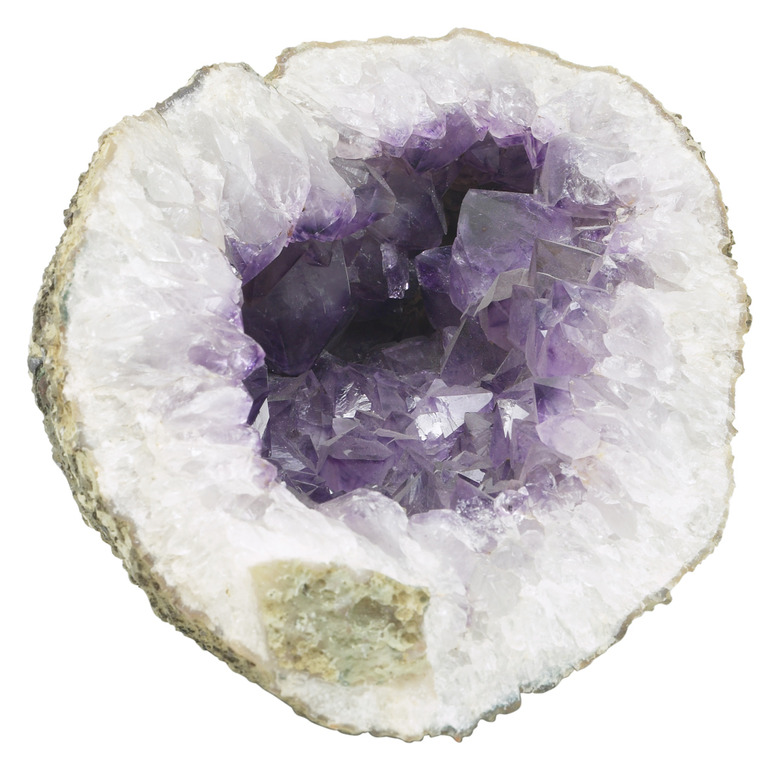Science Experiments On The Formation Of Crystals With Ammonia
Kitchen chemistry experiments like making crystals from salt or sugar solutions are common ways of learning about evaporation and crystallization. While crystal formation in nature can take years and often vast amounts of heat and pressure, creating your own crystals with ammonia requires only a day or two and some items you likely already have in your home. By adding ammonia to a saltwater solution, you speed up the process because ammonia evaporates faster than water.
Step 1
Place pieces of cardboard, charcoal briquettes and sponge in your plastic bowl. Make the pieces small, about an inch long. You can even cut cardboard into shapes like a flower or a tree to let your crystals grow like leaves or petals on the cardboard. These materials make up your substrate, or the material on which your crystals will grow.
Step 2
Add drops of food coloring on your substrate. This step allows for colored crystals; any areas that don't have food coloring will grow white crystals.
Step 3
In a mixing bowl, mix the salt and water together with a spoon until the salt dissolves. Add the ammonia and bluing and mix until the ingredients are well blended.
Step 4
Pour the mixture over the substrate. Some of the mixture will collect at the bottom of the bowl, but you will notice your substrate materials start to soak up the liquid.
Step 5
Set your plastic bowl aside and allow it to sit undisturbed for 10 to 12 hours. When you return, you will see your crystal blooms have grown. The laundry bluing helps your mixture form these blooms rather than large crystal chunks, and the ammonia speeds up the evaporation process. The porous materials like cardboard and sponge pull the mixture from the bottom of the bowl to the top of the substrate pieces in a process called capillary action, much like a tree obtains water from the soil. As the water evaporates, the salt forms crystals.
Things Needed
- 3 tablespoons salt
- 3 tablespoons water
- 2 tablespoons ammonia
- 2 tablespoons laundry bluing
- Food coloring
- Clear, plastic bowl
- Cardboard
- Charcoal briquettes
- Sponge
- Mixing bowl
TL;DR (Too Long; Didn't Read)
Continue to grow your crystal garden by adding more of the mixture to the bottom of your plastic bowl. Wear safety goggles and gloves while combining the ingredients and pouring the mixture over your substrate.
Cite This Article
MLA
Batema, Cara. "Science Experiments On The Formation Of Crystals With Ammonia" sciencing.com, https://www.sciencing.com/science-experiments-formation-crystals-ammonia-14145/. 24 April 2017.
APA
Batema, Cara. (2017, April 24). Science Experiments On The Formation Of Crystals With Ammonia. sciencing.com. Retrieved from https://www.sciencing.com/science-experiments-formation-crystals-ammonia-14145/
Chicago
Batema, Cara. Science Experiments On The Formation Of Crystals With Ammonia last modified August 30, 2022. https://www.sciencing.com/science-experiments-formation-crystals-ammonia-14145/
